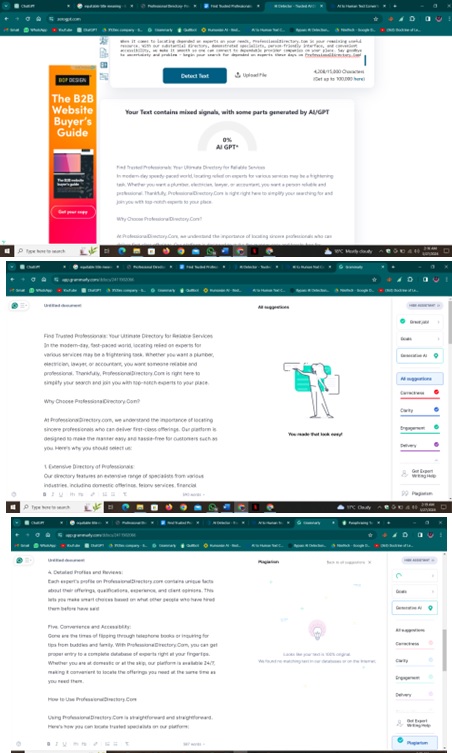Startup Lawyer and Artificial Intelligence (AI) Attorney Andrew S. Bosin in New Jersey drafts SaaS, technology, software, and AI startup contracts and software agreements. Please call 201-446-9643 for a free consultation all across the US.
In running a Tech Startup Law Firm that helps software, SaaS web-based, and artificial intelligence companies, Andrew is about moving at your speed and delivering real-world legal solutions to keep your startup moving forward. From Delaware business formation to privacy policies and terms of use agreements to bringing on partners, to financings and exits, and drafting effective customer agreements, Andrew has helped hundreds of SaaS, technology, software, AI, machine learning, mobile app, cloud, e-commerce and NFT startup companies get off the ground and scale.
A good artificial intelligence lawyer can help protect your startup business and allow you to spend more time scaling and running the company, rather than worrying about legal issues. Implementing well-drafted terms of service (TOS) and privacy policy agreements, can all help your business to get a much stronger start.
Why Hire Andrew to help your tech startup company with its legal agreements?
Personalized AI Legal Services To Startups – Call Backs Within 30 Minutes.
One of the biggest challenges startups face is getting an attorney on a call. All too often, Andrew hears from entrepreneurs that not only can they not get a startup lawyer on the phone they cannot even get a call back. You won’t have this problem with Andrew as your company’s Startup Attorney. Andrew calls all clients within 30 minutes of being called or texted by them.
An Entrepreneur Who Helps Entrepreneurs
Andrew is one of the few Technology Lawyers who has built, launched, and scaled a SaaS company with partners. At the same time he has been running his startup law firm Andrew has also taken the time to also build two Delaware C Corporation SaaS companies as General Counsel. His company uses artificial intelligence (AI) driven models to build custom data predictive analytics.
Because Andrew is also an entrepreneur he understands your legal needs better than most startup attorneys. He gets it from his own entrepreneurial experiences that legal issues and questions pop up all the time. From day one as your lawyer, you can text Andrew with questions about the legal projects he is working on for you and typically he will respond within 15 to 30 minutes.
As General Counsel of his two SaaS startup companies, Andrew has performed just about every legal function related to incorporation in Delaware, issuing stock to founders, shareholders, advisors, and investors, closing capital financing rounds, negotiating investor agreements, and negotiating enterprise deals with customers.
Andrew has also participated in many non-legal activities in building two startups such as the software development process, go-to-market strategies, and marketing and selling to potential customers.
Flat Fee Artificial Intelligence (AI) Legal Packages
As a top artificial intelligence (AI) Lawyer, Andrew offers a $3500 flat fee package for Artificial Intelligence (AI) and Machine Learning (ML) early-stage startup companies, entrepreneurs, and vendors which includes customer subscription agreements, website terms and conditions agreements, and privacy policy agreements. The fee charged by our Law Firm depends on the nature of the app being developed.
The Tech Startup Package does not include legal protections for compliance with the EU’s GDPR or the amendments to California’s Privacy Law which are supposed to go into effect in March of 2024.
For an additional fee of $1500, Andrew can draft a Data Processing Addendum and an enhanced Privacy Policy for compliance with California’s Privacy Law and the EU’s GDPR.
The Importance of Removing PII from AI Training Data
Customer Data will likely include personally identifiable information (PII) such as data elements that can be used to identify an individual, such as names, addresses, social security numbers, financial information, and more. Because privacy risks become a significant concern if PII is not removed from the Customer Data, when negotiating an AI vendor agreement you should request the AI company to remove all PII from the Customer Data.
AI companies must find methods and techniques to strike a balance between using AI models to enhance their operations and maintaining data privacy and compliance. They should explore alternative ways that enable them to train models on proprietary data while ensuring the protection of sensitive information. This could involve ‘treating the data’ before it is put into an AI model, by using privacy-preserving algorithms like tokenization.
Anonymity is a key aspect of privacy. When PII is removed from AI training data, the risk of re-identification or linkage with specific individuals is significantly reduced. This ensures that users’ identities remain protected, maintaining their privacy and avoiding potential biases or discrimination.
The Reasons Needed For Privacy Policies and Terms and Conditions
Implementing a Privacy Policy and Terms and Conditions agreement is a legal and ethical need for SaaS, artificial intelligence (AI), and mobile app startups, businesses, vendors, and companies. It helps in creating trust with users and customers, ensures legal compliance, and provides a clear framework for the use of the SaaS vendor’s website and application.
- Legal Compliance: It helps the SaaS company and mobile app startup comply with various privacy laws and regulations. Many jurisdictions including California require businesses to have clear and transparent privacy policies related to how they collect, use, and protect user data.
- User Trust: Showing clear and comprehensive privacy policies and terms and conditions can build trust with users. When website users and customers know how their data will be collected, stored and used and what to expect, they are more likely to feel comfortable using a SaaS or mobile application.
- Data Protection: Privacy Policies should outline how user data is collected, processed, and stored. It positions the expectations for data protection measures and makes sure that sensitive confidential information and personal data is securely managed.
- Transparency: Implementing clear terms and conditions helps in creating expectations regarding the usage of the SaaS or mobile application. This includes what services are provided, whether a fee is required to use the Service, the user’s responsibilities, and any limitations or restrictions.
- Dispute Resolution: Terms and Conditions often include clauses related to dispute resolution, governing law, and jurisdiction. This can be critical in the event of a legal dispute, offering clarity on how disputes will be resolved.
- Intellectual Property Protection: Terms and Conditions should include language that protects the intellectual property of the SaaS company and app startup. This should include copyrights, trademarks, and restrictions on the use of proprietary information. Language should state that users are prevented from copying, decompiling or reverse engineering the company’s software.
- Liability Limitations: A well-defined limitation of liability clause can protect the SaaS and app company from legal claims. It should outline the extent to which the SaaS company is legally responsible for any damages or losses incurred by users.
- Limiting Warranties: Terms and Conditions should let users know that the website comes with no warranties and the vendor’s SaaS application or mobile app has very few if any warranties of any kind.
- Marketing and Advertising: Privacy Policies and Terms and Conditions can also deal with how user data may be used for marketing and advertising purposes, ensuring compliance with relevant laws and respecting user preferences.
- Changes to Policies: Both the terms and conditions and privacy policy offer a framework for communicating any changes or updates to users. This clarity is necessary, as users have a right to know if there are changes to how their data will be handled.
- Protecting Content. Any website owner should want to protect all of the content it has created that it posts and displays on its website.
Email: andrewbosin@gmail.com









